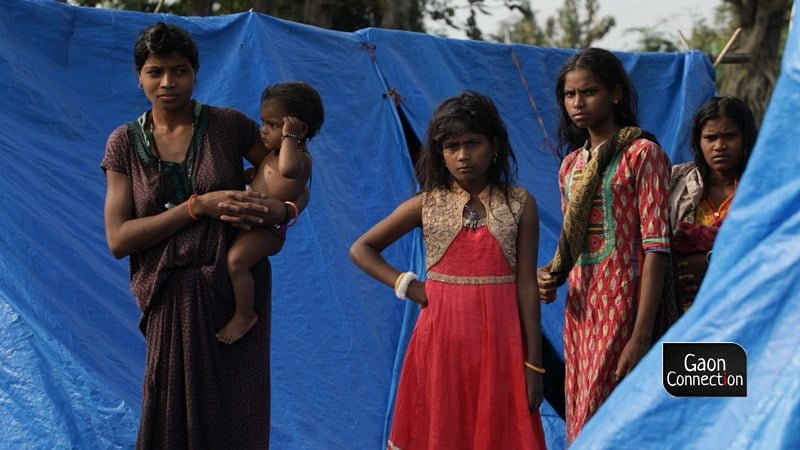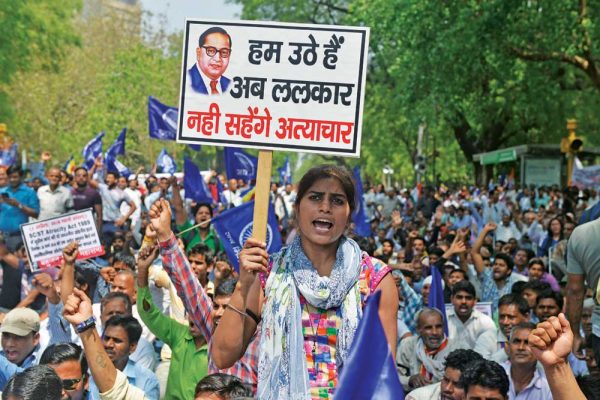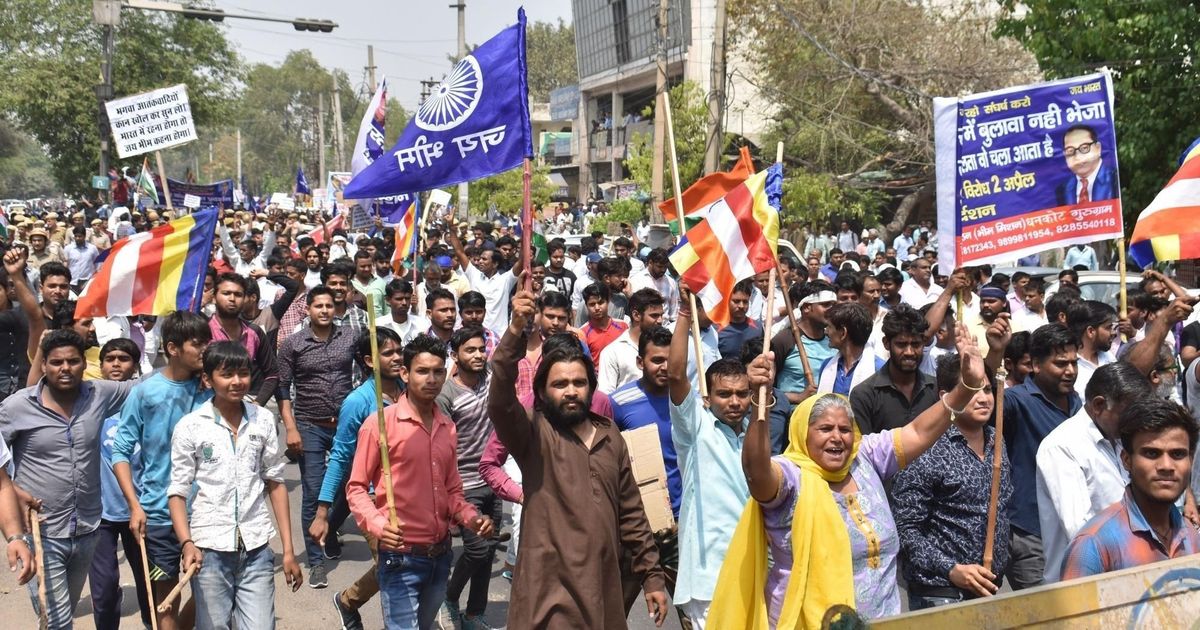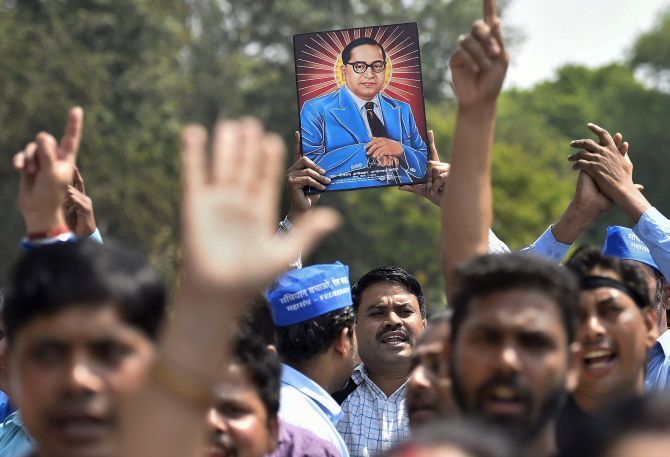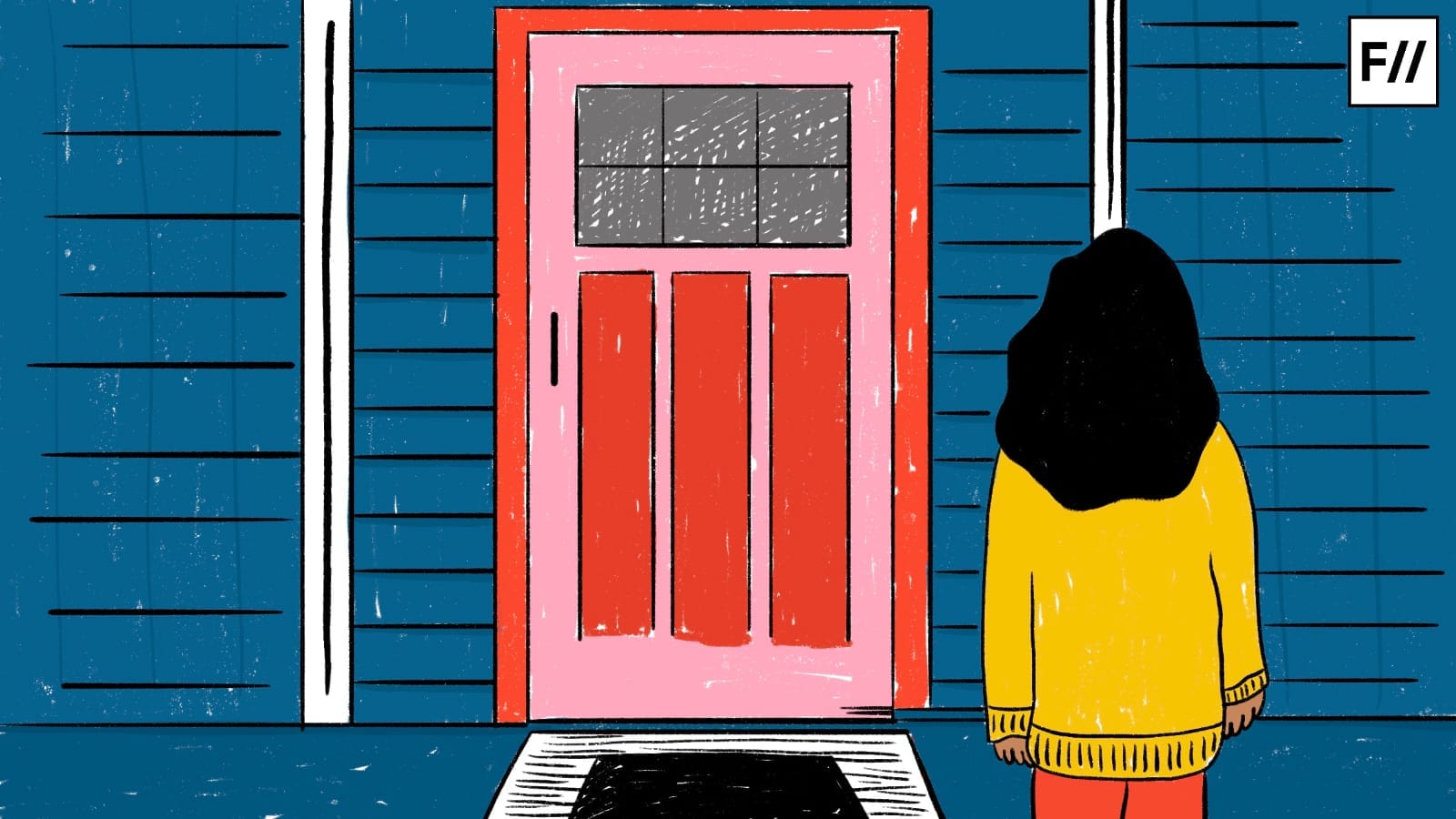Last Friday, the National Campaign on Dalit Human Rights (NCDHR) held a press conference at the Press Club of India to unveil a budget analysis report. The report shed light on the allocation of funds for Scheduled Castes (SCs) and Scheduled Tribes (STs). Contrary to the government’s claims of inclusive development, the analysis revealed that funds intended for the upliftment and welfare of marginalised communities have been diverted to general schemes like road construction and urea subsidy.
Contrary to the government’s claims of inclusive development, the analysis revealed that funds intended for the upliftment and welfare of marginalised communities have been diverted to general schemes like road construction and urea subsidy.
The interim budget for 2024-25, totaling Rs. 51,08,780 crore, was scrutinised by the civil society group. Shockingly, only Rs. 1,65,598 crore was allocated for SCs and Rs. 1,21,023 crore for STs. These figures starkly contrast with the recommended guidelines, which prescribe 16.8% for Dalits and 8.6% for Adivasis. However, the allocation stood at a mere 11.5% for SCs and 8.4% for STs, highlighting a significant disparity in resource allocation for these marginalised communities.
It’s disheartening to observe that merely about 3.1% of the allocated funds for Scheduled Castes (SCs) and approximately 2.5% for Scheduled Tribes (STs) are specifically targeted for the benefit of these communities; the majority of the funds remain symbolic.
This year holds significant importance for India, given the impending general elections and the “vote on account” budget. Against the backdrop of these forthcoming elections, understanding the government’s current priorities becomes paramount. Despite navigating various global crises, India has achieved a commendable growth rate of 6.7%. However, alongside economic progress, social disparities are widening. The government had a prime opportunity to prioritise adequate allocations for schemes and public entitlements aimed at uplifting Dalits and Adivasis, but unfortunately, this opportunity was squandered.
The government had a prime opportunity to prioritise adequate allocations for schemes and public entitlements aimed at uplifting Dalits and Adivasis, but unfortunately, this opportunity was squandered.
Out of the total allocation of Rs. 1,65,598 crore for SCs, a mere Rs. 44,282 crore is earmarked directly for the SC community, while only Rs. 36,212 crore out of Rs. 1,21,023 crore allocated for STs directly benefits tribal communities. Although there has been a slight increase in allocations this year, with the total allocation for SCs rising from Rs. 159,126 crore to Rs. 1,65,598 crore and for STs increasing from Rs. 119,510 crore to Rs. 1,21,023 crore.
Disparity in scheme allocation
According to the report, while there are numerous schemes in place, the allocation for many of them falls short, with several irrelevant schemes receiving disproportionately large funding. For instance, the scheme titled ‘Formation and Promotion of 10,000 Farmer Producer Organisations (FPOs)’ under the Ministry of Agriculture receives a mere Rs. 174 crore in allocation, despite directly benefiting communities. Conversely, there are several other schemes under the same ministry that receive a staggering Rs. 19,913 crore, yet provide little to no benefit to the communities they ostensibly serve.
Similarly, within the Ministry of Social Justice and Empowerment, there exist several impactful schemes that directly benefit marginalised communities, but unfortunately, their allocation remains minimal.
Notably, crucial schemes such as Free Coaching for SCs, STs, and OBCs, National SCs/STs Hub Centre, National Overseas Scholarship, and Top Class Education for SCs have seen almost negligible changes in allocation, despite their significant role in improving the condition of marginalised communities.
Attendees at the press briefing expressed their disappointment over the meager budgetary allotment for Dalits and tribals, underscoring their conviction that the budget, touted as a blueprint for economic revival, neglects the pressing requirements of the socially and economically disadvantaged segments of society. They lamented that the budget fell short in fulfilling needs and addressing their grievances.
Attendees at the press briefing expressed their disappointment over the meager budgetary allotment for Dalits and tribals, underscoring their conviction that the budget, touted as a blueprint for economic revival, neglects the pressing requirements of the socially and economically disadvantaged segments of society.
‘This budget keeps existing inequalities in place and hinders progress for social justice and inclusivity. We are also distressed by the fact that the Central government is trying to ignore the issues of Dalits by changing the entire narrative of caste,’ they said.
Budget utilisation and credibility
Budget credibility refers to the degree to which government budgets are executed, comparing actual revenues and expenditures with approved budget estimates. In countries like India, the underutilisation of SC budgets is a prevalent issue nationwide. For instance, data from the Ministry of Finance’s Union Budget reports reveal that in FY 2019–20, 20% of SC budget funds remained unspent, followed by 14% in FY 2020–21, undermining the integrity of budget execution. According to the concept of Budget Credibility, if the variance between approved budget and utilisation exceeds 10%, it indicates a lack of budget credibility. Similarly, in FY 2019–20, 11% of ST budget funds were left unutilised, as reported by the Comptroller and Auditor General (CAG), India’s supreme audit department.
Experts note that in FY 2024–25, there has been an overall allocation to notional schemes within the SC budget. For example, significant funds were allocated to schemes such as Urea Subsidy Payment for Indigenous Urea and Import of Urea, Nutrient-Based Subsidy Payment for Imported P and K Fertilisers, Compensation to Service Providers for Telecom Infrastructure, and Reform-Linked Distribution Scheme. Conversely, there is an inadequate allocation to effective schemes under the SC Budget, including Top-Class Education for SCs, National Overseas Scholarship for SCs, National Means cum Merit Scholarship Scheme, National Schedule Caste/Schedule Tribe Hub Centre, Free Coaching for SCs and OBCs, and Venture Capital Fund for SCs and OBCs.
Gender in the budget
The ‘Gender Budget Statement‘ by the Union government serves as a crucial instrument for integrating a gender perspective into policymaking processes. However, despite its potential, significant disparities persist between the intended goals and the lived realities experienced by Dalit and Adivasi women.
This year continues to reflect the same trend. The budget allocation for Dalit women stands at Rs. 19,050.24 crore, while for ST women, it is Rs. 4,837.25 crore. An analysis of the Gender Budget Statement (GBS) and Allocation for Welfare of Scheduled Caste/Scheduled Tribe (AWSC/AWST) underscores the meager allocations, indicating a lack of priority accorded to Dalit and Adivasi women. Specifically, the Union Budget 2024-25 allocates only 1.32% for Dalit women and 0.34% for Tribal women from the total eligible Centrally Sponsored Schemes (CSS) and Central Sector Schemes (CS).
Women from these marginalised communities face heightened vulnerability to discrimination and violence due to intersecting caste and gender identities. Shockingly, recent data from the National Crime Records Bureau (NCRB) for 2022 reveals that atrocities against Dalit women and girls constitute 15.11% of total crimes registered under the SCs & STs (PoA) Act from 2014-19. Despite the alarming rise in violence against SC and ST women, there is a mere marginal allocation of Rs. 168 crore for their access to justice. Remarkably, only one scheme addresses this issue, namely ‘Strengthening of Machinery for Enforcement of PCR Act, 1955, and the PoA Act, 1989‘, primarily focusing on sensitisation programs under the Gender Budget.
Recommendations
Over the past decade, from FY 2013-14 to FY 2022-23, a significant sum of Rs. 1,15,68,979 crores in direct tax collection, encompassing Corporation tax, income tax, Customs, and Union Excise Principal tax, remains unrealised. This includes amounts categorised under both disputed and undisputed groups. This substantial sum, if realised, could have been effectively utilised to address pressing needs such as housing, entrepreneurship, quality education, and water and sanitation requirements for at least 100 million of the poorest individuals, including SCs, STs, and other economically disadvantaged groups. However, corporations and businesses have been allowed to evade tax, compounding the issue despite the concessions they already receive from the government.
The report highlights the presence of numerous schemes, yet the allocation is disproportionately low. Additionally, there are several irrelevant schemes receiving substantial funding, which unfortunately offer little benefit to communities. Across six Ministries including Agriculture, Power, Health and Family Welfare, Micro, Medium, and Small Entrepreneurship, Social Justice and Empowerment, and Higher Education, a total of Rs. 27,210 crore has been allocated to these irrelevant schemes.
Conversely, only Rs. 569 crore has been earmarked for effective schemes directly benefiting communities, posing a challenge for comprehensive community development. Therefore, it’s imperative to defund such non-targeted large-scale schemes. Furthermore, all mandatory ministries should allocate funds proportionate to the population for Dalits and Adivasis in accordance with the NITI Ayog guidelines issued in April 2018.
About the author(s)
Anuj is an urban practitioner and an independent writer. He's mostly interested in Feminist Urbanism and the intersection of various identities in the urban. He is a graduate of the Indian Institute for Human Settlements and has disciplinary training in Urban and Regional planning.

